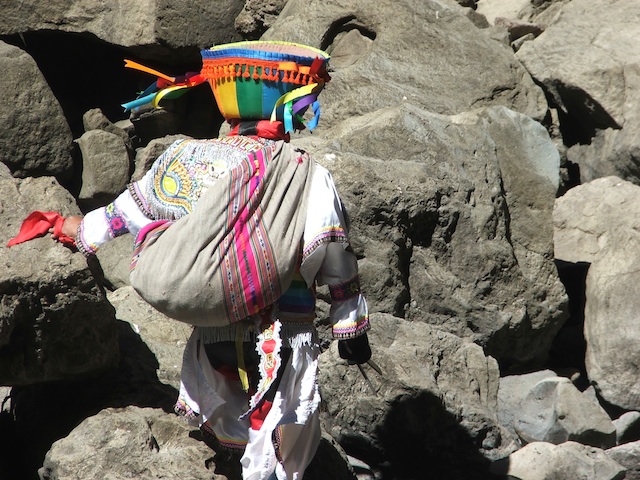
Climate change threatens lives in an already arid country
Peru has lost 22 percent of its glacier area over the past 30 years, according to a World Bank study. Unless new ways to manage and store water can be found, Peruvians will face severe problems in the coming decades.
An avalanche and flood produced by a melting glacier destroyed the valley below in 1961, killing 15,000 people. Glacial meltwater often accumulates in lakes, held back only by rough rock dams. These can burst suddenly, with catastrophic results.
The Pastoruri glacier used to be a prominent tourist attraction. Now it’s a fraction of its former self. Glaciers supply 80 percent of the water for Peru’s arid coast.
Terraces like these are a traditional way of dealing with water shortages. Some date back to Inca times.
“The rain is not like is used to be,” said Valentin Antesana, 83, from the town of Andamarca. He said rains had been erratic and unpredictable in recent years.
A man from Andamarca leaves offerings by the shore of a lake.
A dancer in traditional costume during the annual irrigation festival in Andamarca. Customs and institutions hundreds of years old still govern decisions about water use in many rural areas.
Climate change is likely to bring both severe floods and prolonged droughts to Peru?s Amazon region ? threatening the rainforest and those who live there.
Already parched Lima receives just 9 millimeters of precipitation each year. That could shrink.
Emily Kirkland traveled to Peru with the help of an AT&T New Media Fellowship, to study the adaptation of communities to climate change. This story was adapted from Latin America News Dispatch.
What's your view?
You must be logged in to post a comment.












